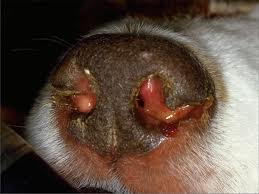
Nasal discharge in dogs and cats – causes and diagnosis of nasal discharge
Pets with runny noses are a common problem. In many cases, the problem clears up with a simple course of antibiotic, but often, as the antibiotics wear off the nasal discharge simply recurs. This series of articles will discuss the most common causes of nasal discharge, how we diagnose what is wrong with your pet and the treatment options.
In this article we will list the most common causes of discharge in dogs and cats and then each fortnight, one of them will be discussed in depth. Differentiating which condition is affecting your pet relies on a series of simple steps to come to a diagnosis.
